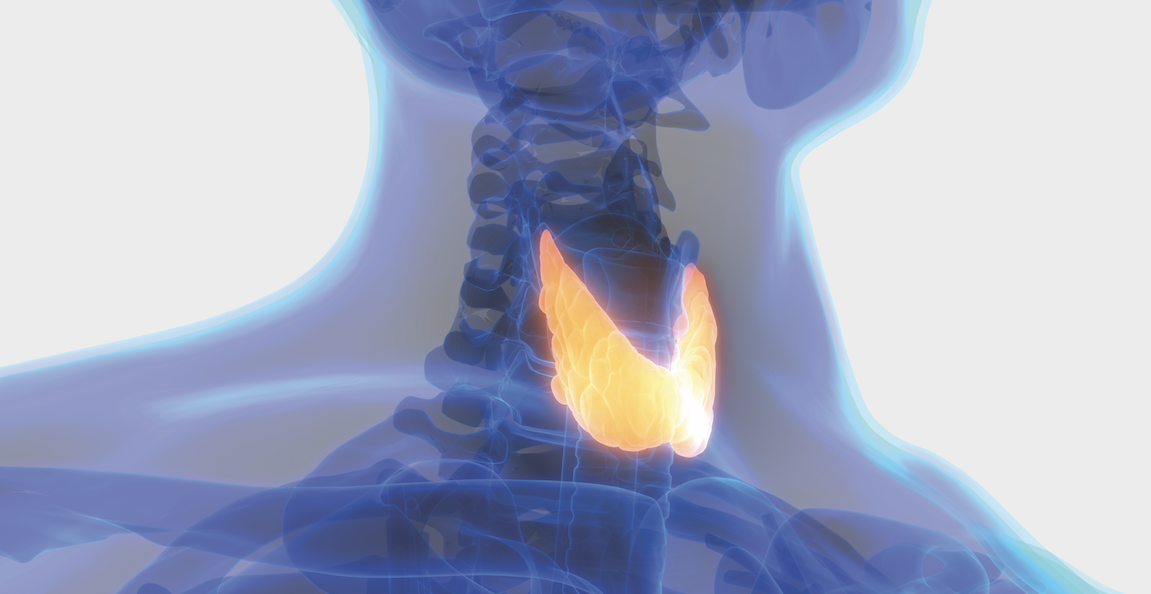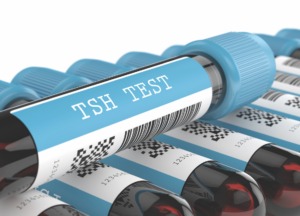Understanding Hashimoto’s Thyroiditis

Approximately 20 million Americans have some form of thyroid disease and, of those, 60% are unaware of their condition. In my years of medical practice, on any given week, I will encounter several such individuals. Just this week, a 42-year-old woman came into my office complaining of low energy, weight gain and feeling cold “even when everyone else around me is hot!” She is frustrated with her lack of weight loss despite having increased her exercise intensity and starting a low carb, portion control diet. And, other than her family history of autoimmune disease, she is otherwise healthy without other medical issues. Her story is common and her frustration shared by many, and it all stems from her thyroid.
Small Gland, Large Impact
The thyroid is a small, butterfly-shaped gland located in the front of the neck that usually cannot be felt with our hands. It secretes thyroid hormones which play a vital role in nearly every organ system of our bodies like development of the brain and nervous system, regulation of mood, energy levels, temperature, metabolism and weight change, hair, skin and nail growth, digestion and heart rate. Generate too little of it (i.e. hypothyroidism), and your body feels “slower” than usual, causing slow heart rate, tiredness, depression and constipation. Hypothyroidism can also cause a slow metabolism, which leads to weight gain. Generate too much (i.e. hyperthyroidism) and the pendulum swings in the other direction, making your body function “faster,” causing rapid heart rate, anxiousness and jitters, diarrhea and a faster metabolism, leading to weight loss.
Hashimoto’s Thyroiditis: How it works and how it feels
While the vast majority of Americans have a normal functioning thyroid gland, as noted earlier, approximately 20 million Americans have some form of thyroid disease. Hashimoto’s Thyroiditis is one such thyroid disease in which the thyroid gland becomes inflamed, and it is the most common cause of thyroid inflammation in iodine-sufficient parts of the world, like the United States. Hashimoto’s is classified as an autoimmune condition in which the body develops antibodies that attack the thyroid gland (Thyroid Peroxidase Antibodies) and gradually break it down. While many people may not feel symptoms at first, over time the thyroid begins to produce insufficient levels of hormone leading to a variety of hypothyroidism symptoms such as fatigue, weight gain, frequently feeling cold, constipation, joint and muscle pain, dry and thinning hair, and in women, heavier periods or other period changes, as well as difficulty getting pregnant. Occasionally, people can present with an enlarged thyroid gland, called goiter, which can create a feeling of fullness in the throat and difficulty swallowing but is usually not painful.
While it’s unclear why the body develops Thyroid Peroxidase Antibodies, several risk factors to Hashimoto’s Thyroiditis have been identified. For example, Hashimoto’s is seven times more likely to appear in women than men and often appears between the ages of 40 and 60. It does not exclusively affect older people as it is also the most common cause of hypothyroidism in children. There also seems to be a genetic component, as patients with Hashimoto’s are more likely to report a family or personal history of other autoimmune diseases (diseases where the body develops antibodies that attack its own organs) such as Type 1 diabetes, lupus and rheumatoid arthritis. Finally, environmental factors such as very little or very high iodine intake, low selenium intake, childhood weight gain and being overweight or obese by age 14 have all been linked with increased Hashimoto’s incidence.
Just What the Doctor Ordered
Doctors typically diagnose Hashimoto’s by taking note of their patients’ histories and listening closely for those telltale hypothyroidism symptoms. In my practice, most Hashimoto’s patients will seek help with new feelings of fatigue that persist throughout the day and are not improved with additional sleep and rest. They will also detail a history of difficulty losing weight despite increased exercise or making dietary improvements. Several of my female patients will note changes to their periods — either heavy or occurring at irregular intervals. The physical exam usually shows an increase in weight, slower than baseline heart rate, dry and thinning hair and occasional findings of depression.
The diagnosis is then confirmed by checking blood tests for high levels of Thyroid Stimulating Hormone (TSH) as well as Thyroid Peroxidase Antibody. Occasionally, when the disease is caught early, someone might have the typical lab findings but no symptoms — a condition called Subclinical Hypothyroidism. In these instances, your physician might decide to hold off on medication and monitor this with regular checkups and repeat blood tests in six- or twelve-month intervals.

Since people with Hashimoto’s can no longer produce sufficient thyroid hormone, treatment usually entails taking a daily thyroid hormone replacement called Levothyroxine, a synthetic version of the body’s natural thyroid hormone. Once medication is started, TSH levels are then checked every six to eight weeks until balance is achieved to ensure that the medication is working properly. Most patients note that, at the appropriate dose, the effects are almost immediate with the vast majority of symptoms clearing up after just a short period of use. After that point, doctors routinely recheck symptoms with a physical exam and labs every 6-12 months, adjusting the medication dose as needed.
Although this condition is permanent and medication supplementation is typically lifelong, the prognosis for Hashimoto’s Thyroiditis is very good and, once treated, it does not shorten one’s lifespan nor should it diminish one’s quality of life. So, if you have questions about your thyroid or you feel like you have some of the classic symptoms, you could be one of those millions of Americans who are unaware of a thyroid condition. Let your doctor know and work with them to find the right solution.
About the Author
 Dr. de Lota is a Family Medicine physician working at Austin Regional Clinic. He enjoys treating people of all ages and has a passion for preventative care, evidence-based medicine, and patient education.
Dr. de Lota is a Family Medicine physician working at Austin Regional Clinic. He enjoys treating people of all ages and has a passion for preventative care, evidence-based medicine, and patient education.






